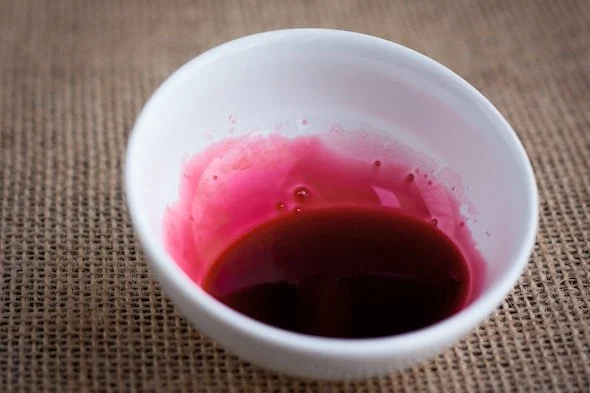The recent Red Dye #3 ban has sent ripples through the food and baking industry, requiring manufacturers to find safe, effective alternatives without compromising on the vibrant red hues consumers expect. At Thymly Products, we’re turning this challenge into an opportunity—offering innovative ingredient solutions tailored for the modern baking industry.”
Why is Red Dye #3 Banned?
Red Dye #3, also known as Erythrosine, has been under scrutiny for years due to concerns about its potential health risks. The FDA recently prohibited its use in food and beverages, aligning with growing consumer demand for cleaner, more natural ingredient profiles. As the industry moves toward natural alternatives, it’s crucial to understand the best replacement options that provide consistent results without impacting product quality.
Natural Alternatives to Red Dye #3
Replacing synthetic dyes requires careful consideration of stability, pH interactions, and heat resistance. Fortunately, several natural colorants offer promising solutions:
- Beet Juice Powder – A naturally vibrant option, beet juice powder provides a rich red color while maintaining a clean label appeal. It works well in baked goods but may have some sensitivity to heat and pH variations.
- Anthocyanins (Red Cabbage & Black Carrot Extracts) – Derived from fruits and vegetables, anthocyanins offer a deep red-to-purple hue. They are highly effective in low-pH environments like fruit-based fillings and icings.
- Paprika Extract – Known for its bright red-orange shade, paprika extract is a stable alternative, especially in dry applications such as spice blends and coatings.
- Carmine (Cochineal Extract) – A widely used natural red colorant, carmine provides excellent stability, but it is not suitable for vegan or plant-based formulations due to its insect-derived origin.
- Lycopene (Tomato Extract) – A heat-stable, plant-based pigment, lycopene delivers a strong red color and offers additional nutritional benefits.
How Custom Blending Impacts Color Stability in Red Dye #3 Alternatives
When transitioning away from Red Dye #3, color stability becomes a major concern, especially for naturally derived alternatives like beet juice. Custom blending plays a crucial role in maintaining consistent color, improving performance in different applications, and ensuring shelf-life stability.
Challenges with Beet Juice as a Colorant To Replace Red Dye #3
Beet juice is a popular natural red colorant, but it comes with unique formulation challenges:
❌ Heat Sensitivity – Beets lose their vibrant red and turn brownish when exposed to high temperatures, making them less effective in baked goods.
❌ pH Variability – The red hue can shift based on the pH of the food product, potentially leading to undesired color changes.
❌ Light and Oxidation Issues – Natural pigments in beet juice can degrade over time when exposed to oxygen and light, leading to fading.
How Custom Blending Improves Stability
At Thymly Products, our expertise in custom blending allows us to enhance the performance of beet juice and other natural colors by optimizing their formulation for specific applications.
1. pH Optimization for Maximum Color Retention
Beet juice works best in a slightly acidic environment. Our custom blends can include pH stabilizers to maintain the ideal conditions, preventing color shifts and ensuring a stable red hue across different formulations.
2. Heat-Stable Blends for Baking Applications
To prevent color degradation in high-heat applications like baked goods, we create heat-resistant blends by combining beet juice with other natural colorants like anthocyanins (from black carrots or berries). This synergy helps retain a rich red color even at elevated temperatures.
3. Antioxidant Fortification to Prevent Fading
Oxidation can dull natural colors over time. We incorporate antioxidants like ascorbic acid or rosemary extract into custom blends to extend color vibrancy and improve shelf life.
4. Controlled Water Activity for Dry Blends
For powdered or dry applications, we adjust the water activity levels in our custom blends to ensure that beet juice powder remains stable and doesn’t clump or degrade prematurely.
5. Enhancing Color Intensity with Multi-Pigment Systems
Instead of relying solely on beet juice, we create multi-pigment systems by blending it with other stable natural colors like paprika, carmine, or lycopene. This approach enhances vibrancy and ensures a more uniform red appearance.
The Thymly Advantage: Custom Blending for Color Consistency
Switching from Red Dye #3 doesn’t mean sacrificing color quality. At Thymly Products, our custom-blended solutions provide:
✅ Consistent and stable red hues across all applications.
✅ Optimized performance in baking, confections, and beverages.
✅ Improved shelf life and oxidation resistance.
✅ Clean-label solutions that meet regulatory requirements.
While you’re reformulating to remove Red Dye #3 and need a stable, high-performance red alternative, Thymly Products is here to help. Contact a sales representative today to explore the right custom blend for your needs for red dye #3 replacement!


